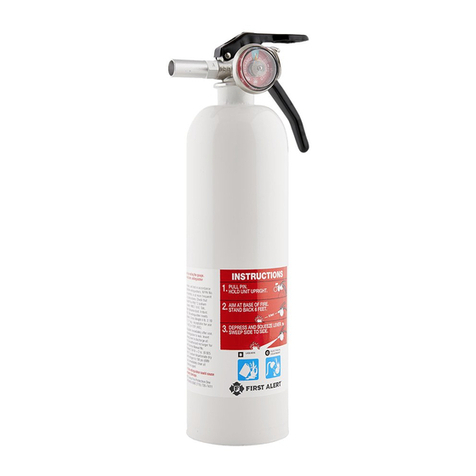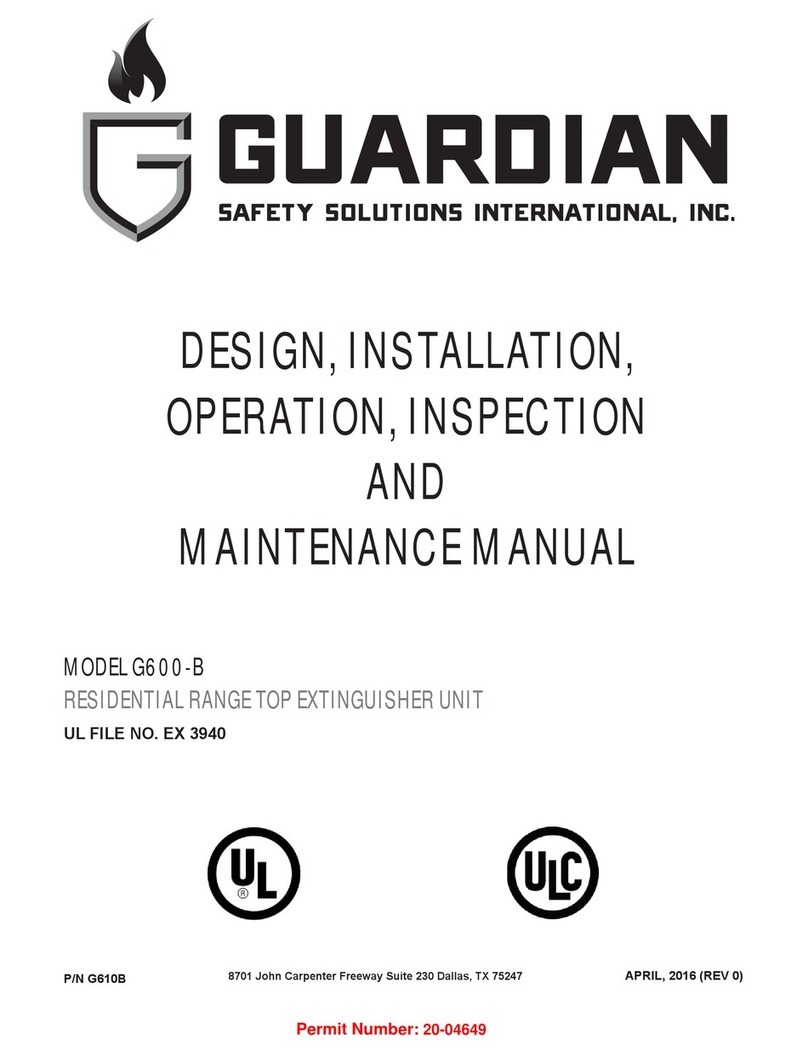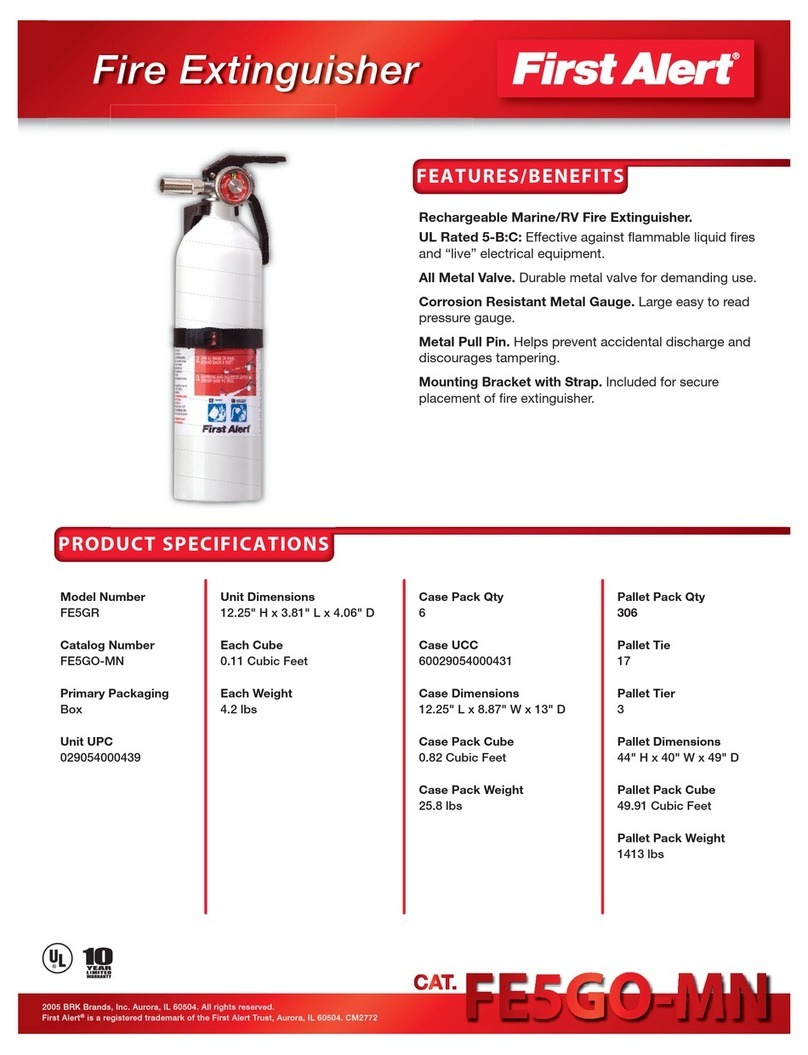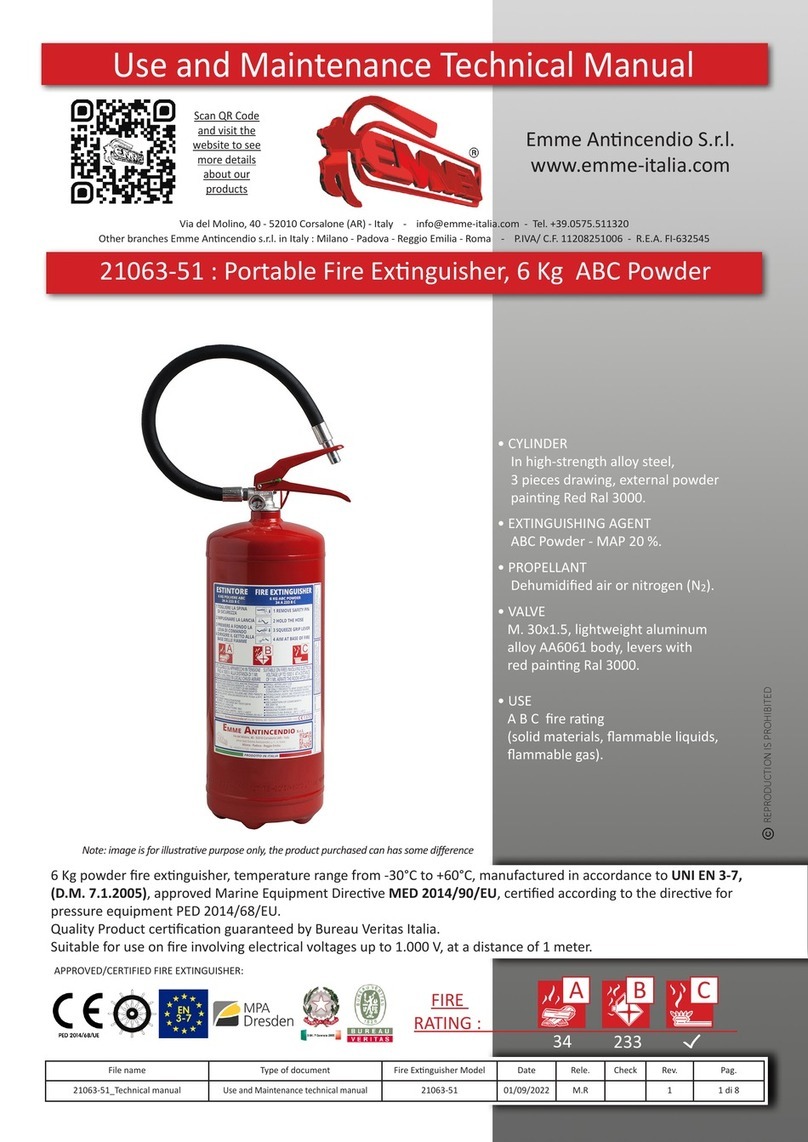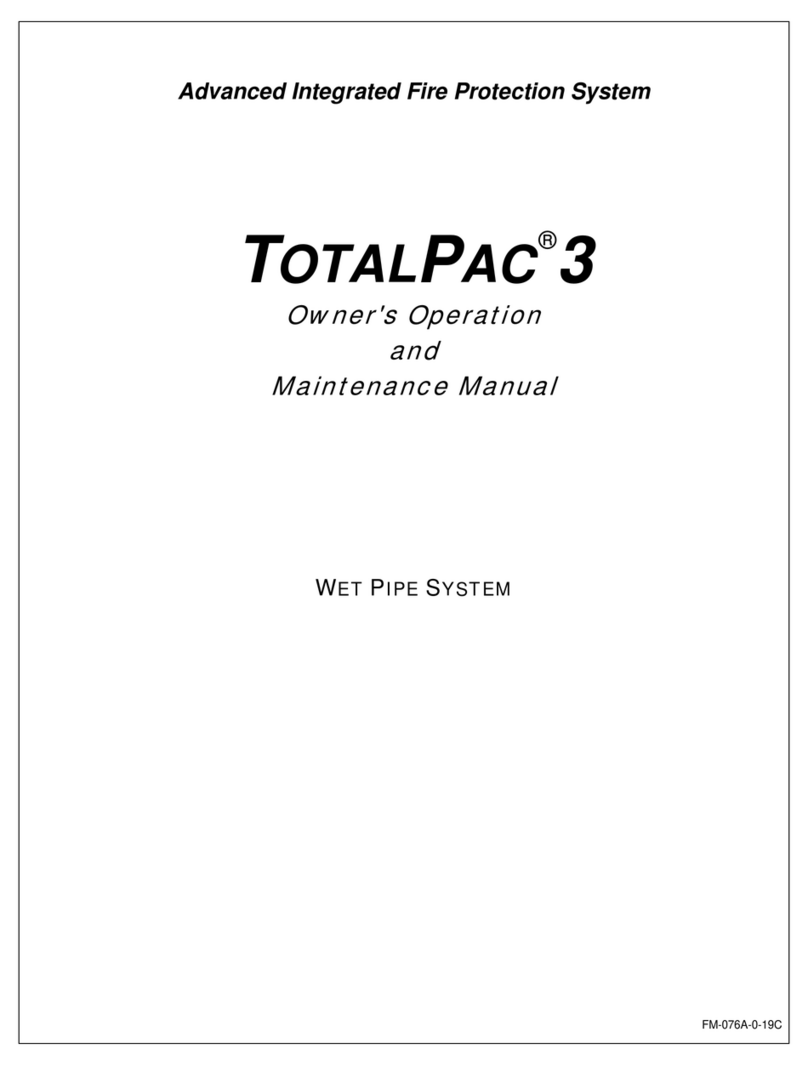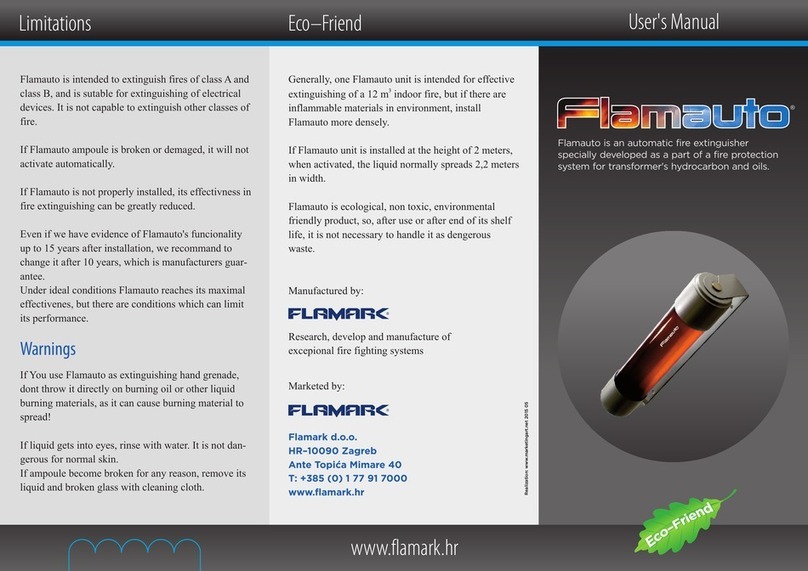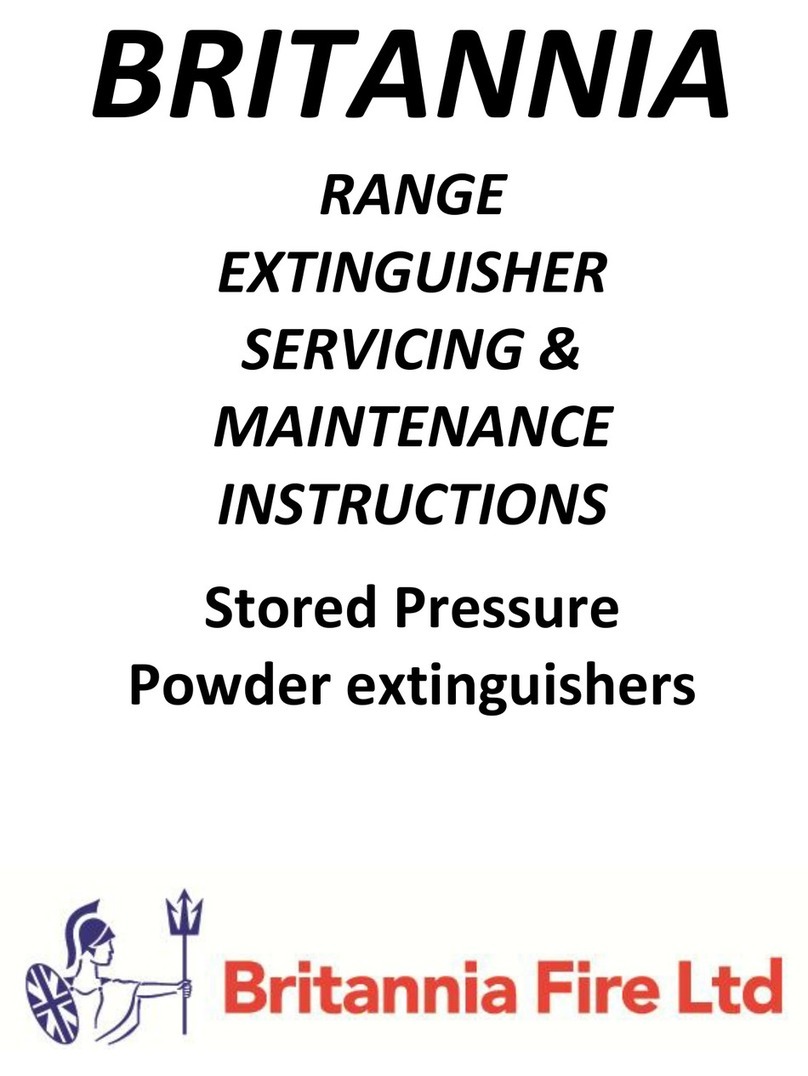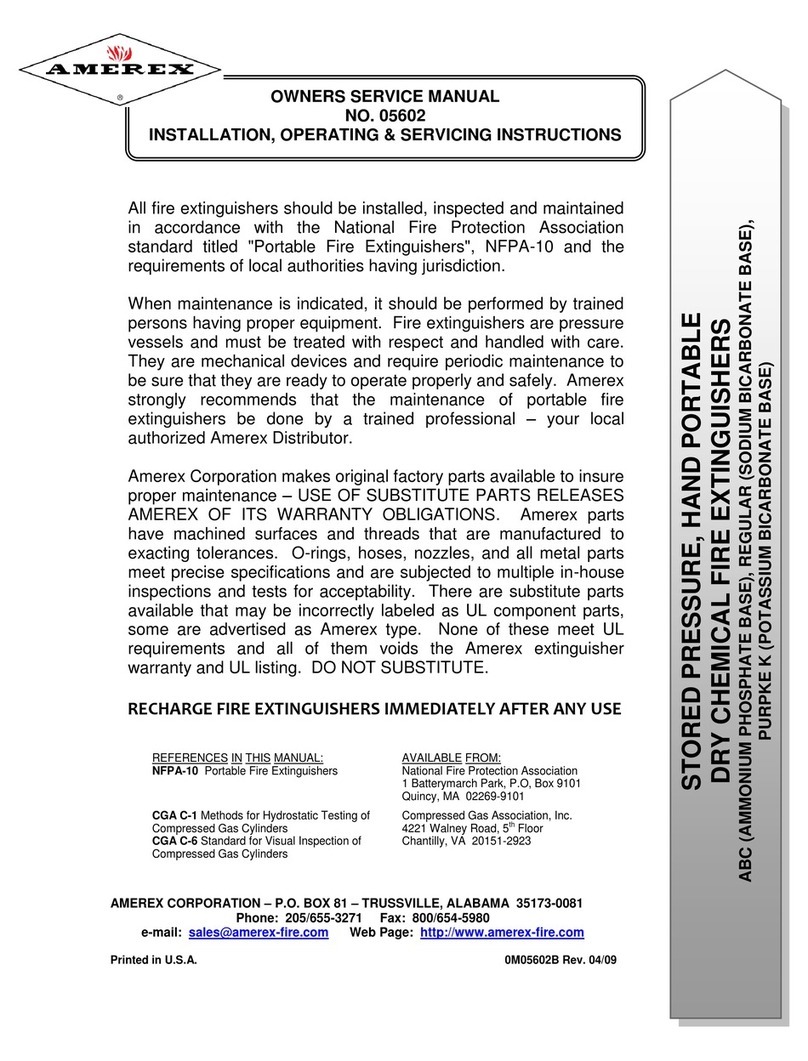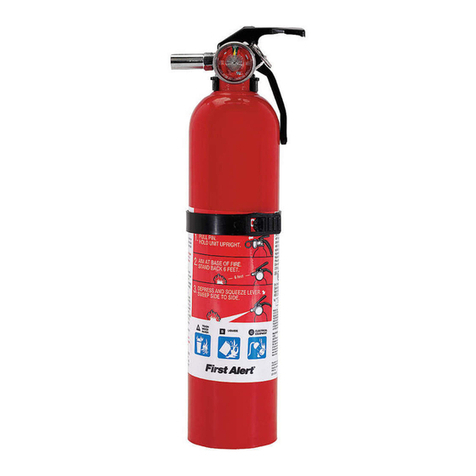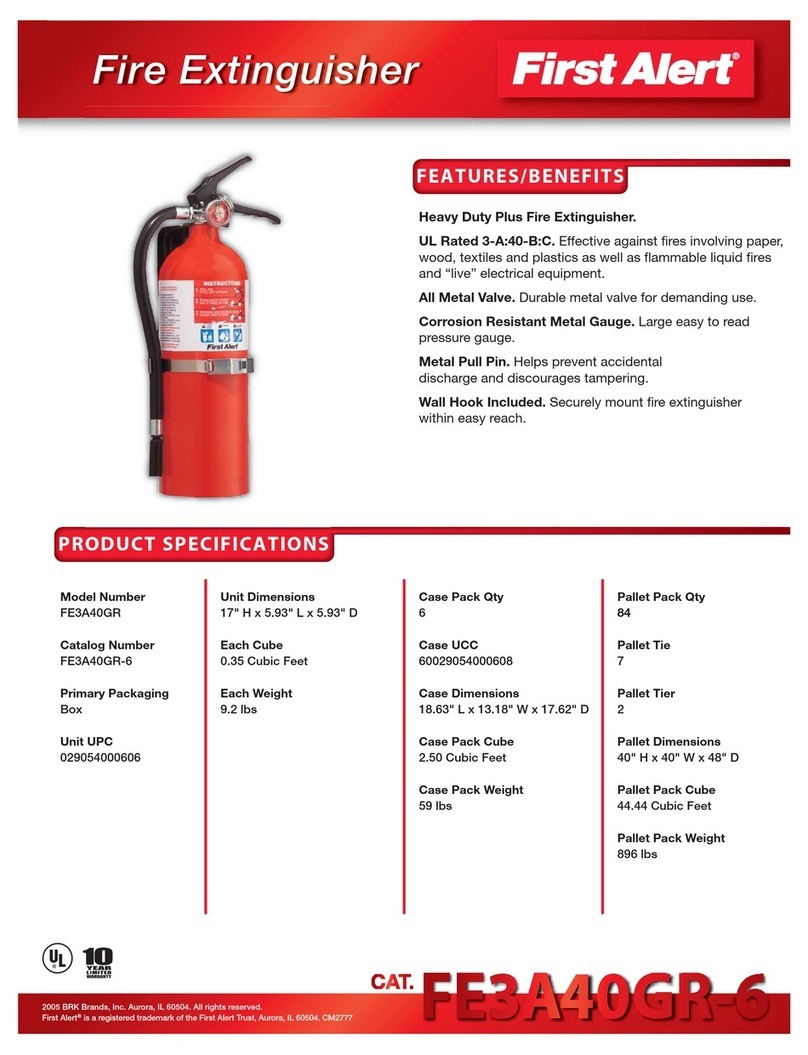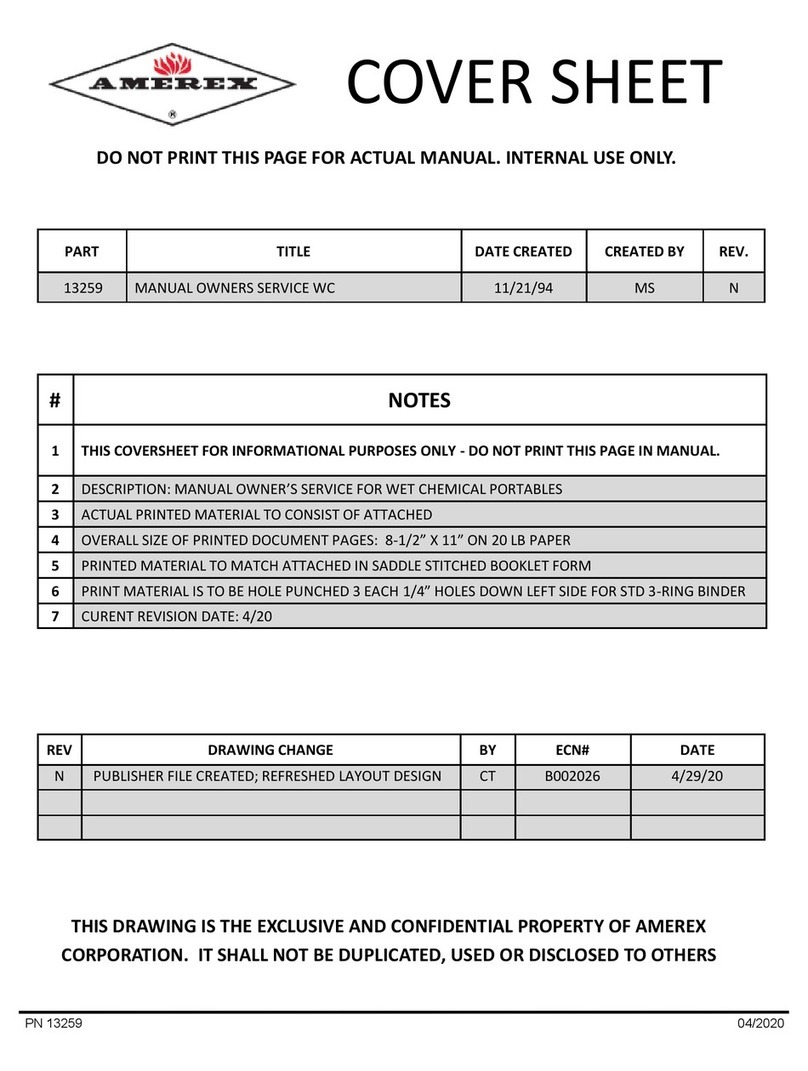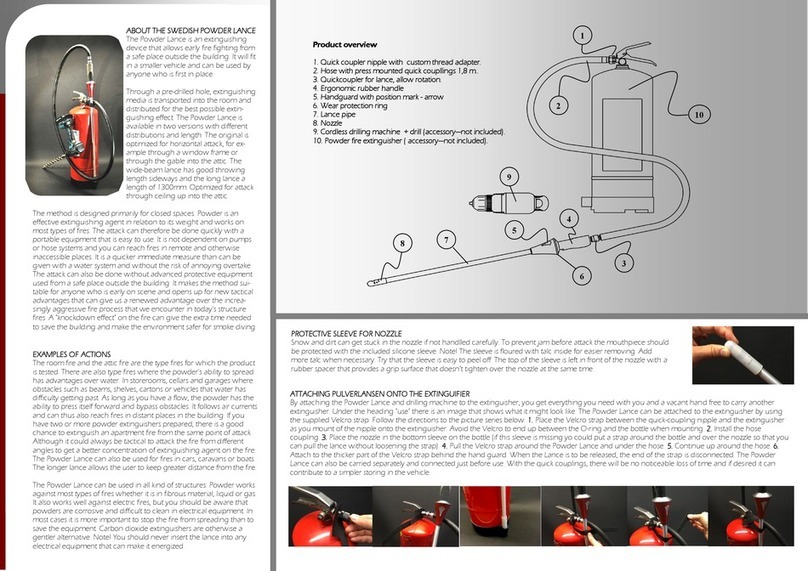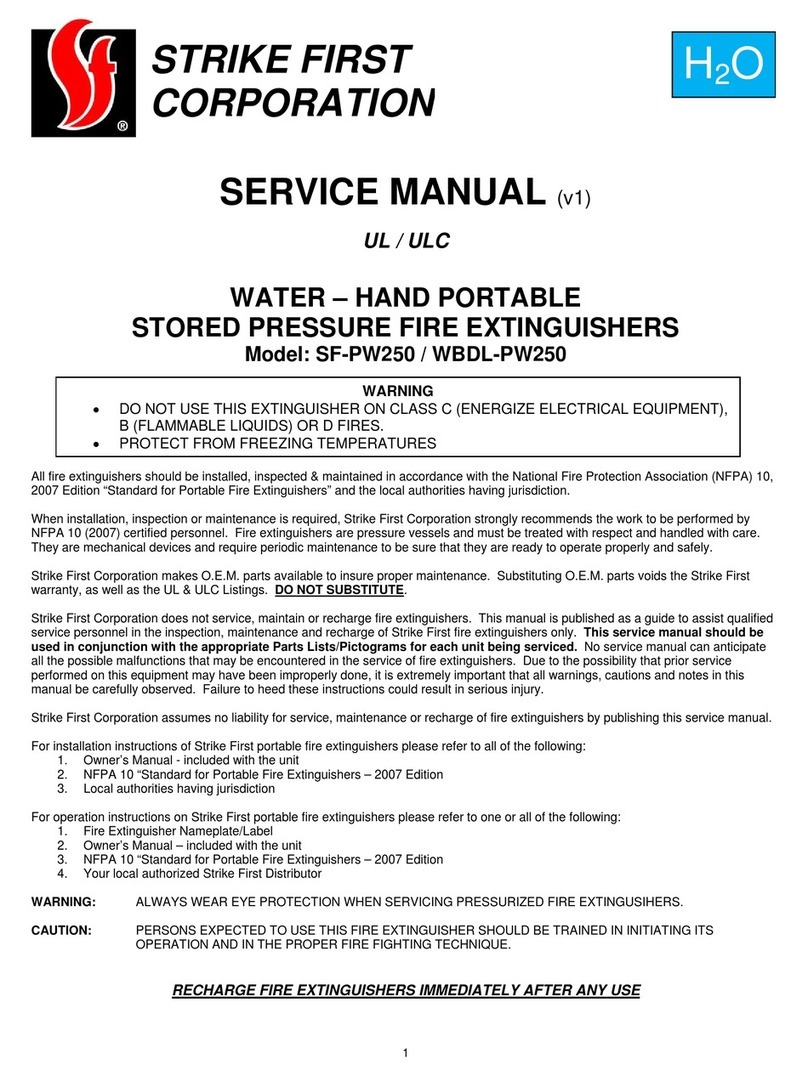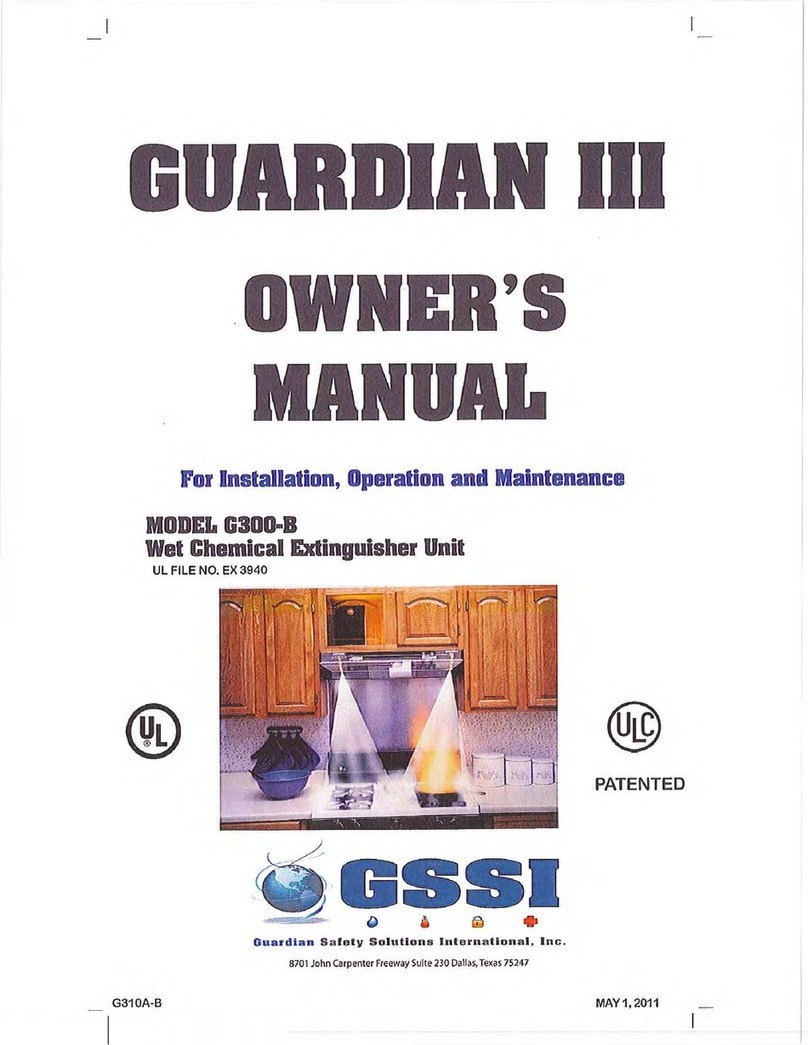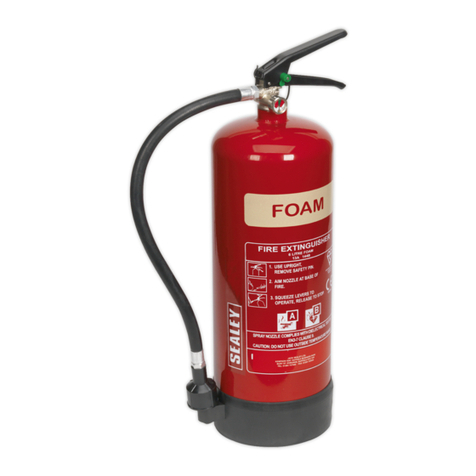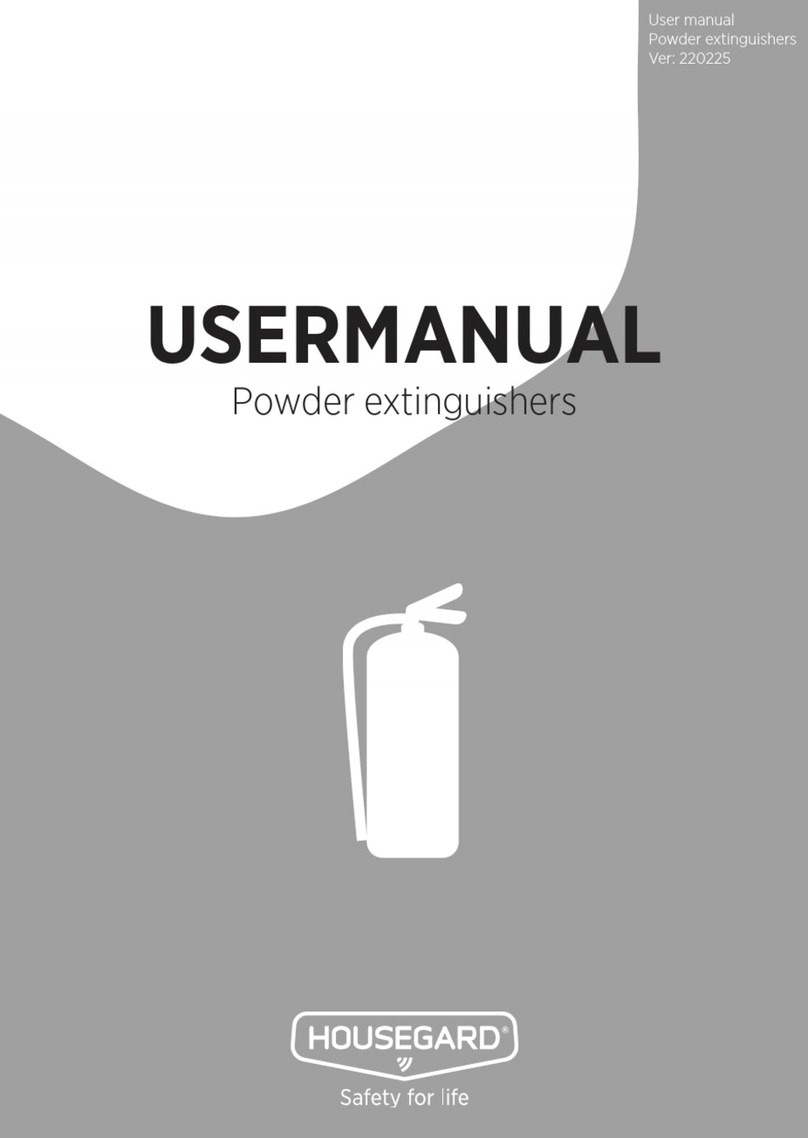
Page 2of 4
SPINTRO REV 5: September 2010
PROCEDURES FOR SERVICING THE BRITANNIA RANGE OF
HAND PORTABLE FIRE EXTINGUISHERS
Introduction
The commissioning and servicing of fire fighting equipment must be carried out by a competent
person using the correct tools to follow these manufacturer’s instructions and any National
standards required in the relevant Country.
This maintenance should be performed at least annually. The extinguishers should be visually
inspected at least quarterly, but preferably monthly, by the user, to ensure that the equipment
is in its designated position, has not been used and has not been tampered with.
Servicing and recharging should be carried out in a clean dry environment. All recharge
materials and spare parts must be as specified by the manufacturer. Particular attention is
drawn to replacement CO2 cartridges, which must be obtained from the Manufacturer. Minor
differences in cartridge design may affect the correct operation of the extinguisher.
In the event that an extinguisher cannot immediately be rendered suitable for continued
service, it must be marked ‘NOT MAINTAINED’ until it can be repaired/recharged.
The competent person must advise the user of any equipment, which is either condemned or
unfit for service and make any recommendations for replacement and/or remedial work.
Always check the security and suitability of the hanging bracket, and that the extinguisher is of
the right type for the prevalent risk.
If the extinguisher is to be sited in a hazardous/corrosive environment i.e. marine use, the
inspection periods should be more frequent. The effects of the environment should be
considered, with particular reference to corrosion and legibility of marking instructions. If there
is corrosion or the markings are not legible, then the extinguisher should be withdrawn from
service. This is a requirement of the Marine Equipment Directive.
It is essential that extinguishers are not subjected to temperatures outside of the temperature
range stated on the extinguisher.
Extinguishers should remain in their allocated location, and should be used only for the
purposes of extinguishing a fire. On no account should the extinguisher be removed for any
other purpose, and should not be subjected to any impact, force, heat, abrasion or any other
misuse or condition that may be detrimental to the integrity of the extinguisher.
Failure to use the recommended spare parts and adhere to these maintenance instructions may
cause the extinguisher to malfunction or prevent it from operating altogether. This may
invalidate the warranty and the manufacturer accepts no liability in the event that these
instructions are not followed.
Care must be taken to ensure that residual media (powder and foam) are disposed of in
accordance with environmental legislation. Where facilities exist, condemned extinguishers and
components should be recycled.
